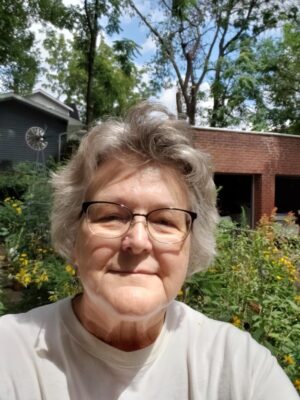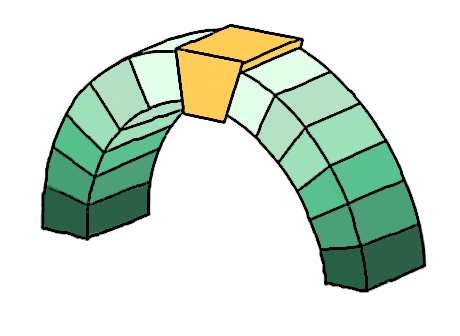A Lifetime of Supporting Native Plants
“My earliest days of native plant gardening started many years before I joined Wild Ones. When I bought my first and current house in 1976, I brought a few plants back from my family’s 40 acres in Miller County MO and added them to my yard. I had wandered that 40 acres as a child and appreciated the native plants. Most of my relatives could not tell what they were, so I had to learn on my own. My first Wildflower book was Missouri Wildflowers, written by Edgar Denison, 1978 3rd edition, published by the Missouri Conservation Department. I used it until it started falling apart. It was just the first of many books on native plants.”
“More serious native gardening did not happen until I volunteered with a group of other Sierra Club people in the mid-1980s, to help Bill Davit plant native prairie plants near an old pigpen in a field at the Arboretum (Shaw Nature Reserve). They are now part of their large prairie system. I visited these plants over a few years, watching them grow. This was my first prairie plant experience. “
When asked about challenges in native gardening, Kathy said, “Trying to make the right plant grow in the wrong place. At the September 1995 Arboretum plant sale, I bought 13 plants to start a garden in my front yard. I dug up the zoysia grass, put in a border and planted my new plants. Having no experience with this, I probably made some bad choices. Only three of those plants are still there. Also, in 1995 I decided to grow things from seeds. I collected seeds in the wild places I visited, including my family’s properties. I dug up a patch in my backyard and planted the seeds in rows, with labels, covering the whole thing with plastic chicken wire to keep squirrels, birds and rabbits away. I had no idea if this would work. About half of them germinated. I was amazed. I have expanded the garden and added many other plants over the years.”
“I want to have only native plants in my yard. It is good to see plants at all stages of their lives. I keep adding plants to my yard, plants that I do not have already, many grown from seed. There’s not much more room in my small St. Louis city yard. I plan to continue to encourage others to grow native in their yards. I label many of my front yard plants, so the people passing on the sidewalk can know what is there. I have six signs in my front yard to show I have a purpose “
Sharing a bit of her ongoing commitment to native plants, Kathy said, “I help manage a community garden in my neighborhood, a Seed St. Louis garden. I have added many native plants to this garden. I am the coordinator of the St. Louis Wild Ones Grant Committee. We help those who apply for the grants to choose the correct plants for their location. We award them money to pay for those plants.”
Regarding Wild Ones, Kathy said, “I do not remember exactly how I knew to be at the first meeting. The Sierra Club did highway clean up on a portion of highway 40. We planted and maintained a prairie garden there at Highway 40 and Lindbergh. They tell me our first meeting was there; I am in the photos from 1998. I have always enjoyed sharing plants and knowledge of plants with other members. The yearly seed and plant exchange with the potluck dinner is always my favorite meeting.” Kathy says her favorite native plants are queen of the prairie, royal catchfly, and Michigan lily.
It will come as no surprise that Kathy likes raising caterpillars of butterflies and moths and passing this knowledge onto her young neighbors and family. She says, “I am constantly amazed to find the insect, bee or butterfly specialist that needs a particular plant in the yard to survive. I am happy to have it for them. While trying to educate my neighbors, I tell them, ‘If there are no holes in the leaves of your plants, you are doing something wrong.’”
post by Savannah Furman, Chapter member and volunteer
To learn more about our Keystone Member series and other members we are highlighting
visit: https://stlwildones.org/keystone-members/



Kathy you are an extremely knowledgable native plant expert and we all highly respect your knowledge.
It’s great to learn about Kathy’s journey of discovery through the native plant world — congratulations on a career as a super volunteer.